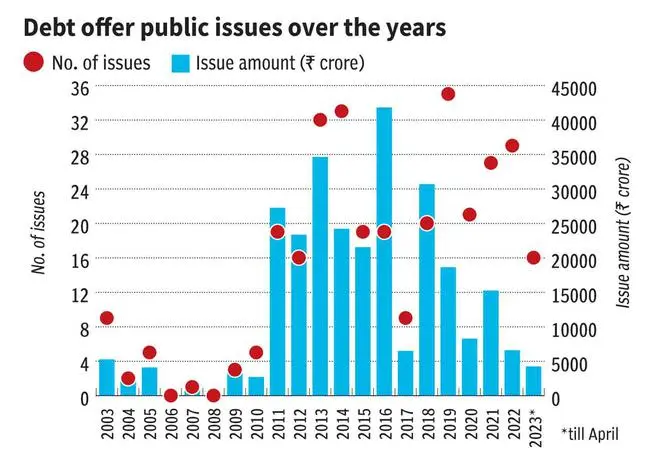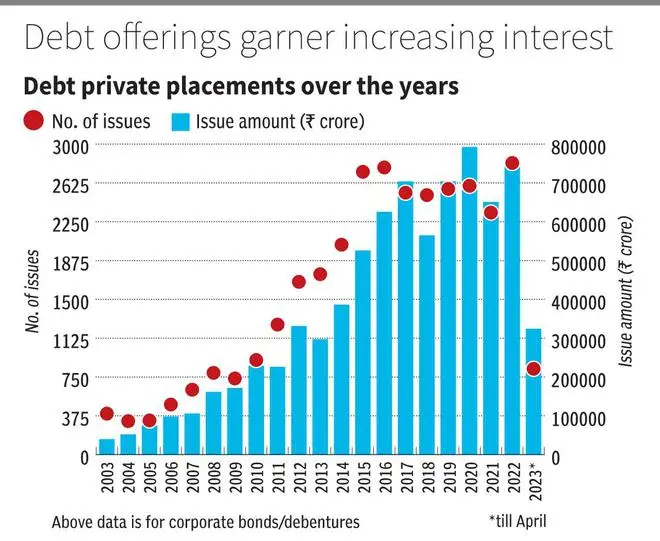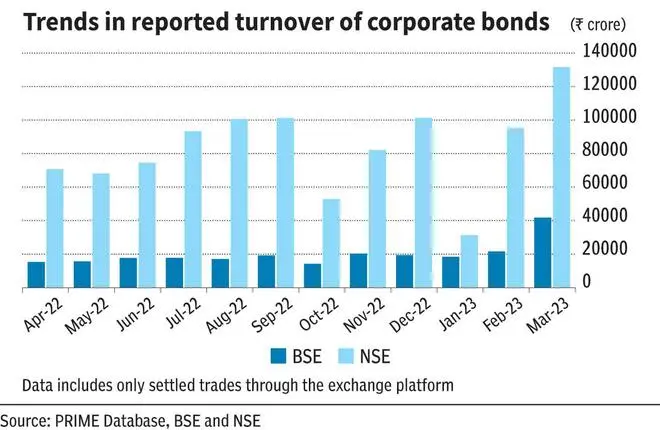‘Three thousand ducats. I think I may take his bond‘ — these are the famous words of Shylock in William Shakespeare’s The Merchant of Venice as the crafty moneylender, in principle, agrees to help a young Bassanio. Literary enthusiasts would know that the word ‘bond’ (in finance) is perhaps as old as the English language itself. Be it cash-crunched kings waging expensive wars in reality, or love-struck men in fiction wooing prospective partners, bonds have always helped.
Coming closer home, the development of government and corporate bond markets in India has not kept pace with the local equities market. But some winds of change seem to be blowing in this direction.
There have been concerted efforts by authorities, government and bond issuers to deepen the penetration of the Indian bond market and diversify corporate bond ownership. It is in this backdrop that the emergence of Online Bond Platform Providers (OBPPs) should be seen. Adding flavours of online shopping, attractive user interface, zero costs, high convenience and wide availability of information, OBPPs have aimed to democratise the way Indian retail investors deal with bonds, though the option of investing in bonds through your regular trading account has always been there. Here is a lowdown.

Mushrooming of OBPPs
During the past 3-4 years, there has been a surge in the number of online bond platforms setting up shop. The advent of online bond platforms coincided with the low-interest regime, during which the interest on traditional fixed income products such as bank fixed deposits went down sharply. A 9-11 per cent annual return then was quite attractive when bank FDs offered 5-6 per cent.
A few other things were happening simultaneously in the background that made such platforms popular. One, digital transactions came up in a big way. Two, investors were inclined to experiment with online platforms as the fruits of technology became more mainstream. Three, the appetite for risk rose even among those preferring debt offerings. Recall that during this phase, equities, in general, were giving good returns. Four, new investors entered the markets and were keen on diversifying their debt exposure beyond bank FDs and debt mutual funds.
Most online bond platforms are fintechs or are backed by stockbrokers or SEBI-registered intermediaries. Combining sleek website/app design with attractive marketing campaigns and simpler language, many such platforms were a hit with investors, especially with the young lot.
However, sometimes, online bond platforms sold offerings that were based on unlisted debt securities. Non-market linked alternative investment opportunities were marketed like traditional debt offerings. Many orders were routed and settled outside the regulated infrastructure/mechanism. Riskier bonds were being packaged as FD alternatives. Clearly, the absence of formal regulation was a sore point, prompting SEBI to step in.
Investor safeguards
To curb the menace of mushrooming online bond platforms and preserve the sanctity of transactions executed on these platforms, SEBI brought Online Bond Platform Providers (OBPPs) under its purview last year.
SEBI requires entities operating or desirous of operating as OBPPs to be a company incorporated in India. They have to register as a stockbroker in the debt segment of the stock exchange(s). This ensures OBPPs’ compliance with broker norms, thus making bond investments safer.
SEBI directed that execution of debt security orders be mandatorily routed and settled through the stock exchange mechanism, which meant no ‘offline transactions’.
The regulator also said that any entity acting as an OBPP now or previously, has to stop offering products/services/securities other than listed debt securities and debt securities proposed to be listed through a public offering.

Privately placed listed bonds now come with a higher ticket size than publicly issued listed bonds. This step ensured that listed debt is preferred by smaller retail investors. This apart, SEBI brought in strict norms for when OBPP entities allow third-party sellers of debt securities to use the platform to sell such securities, which strengthened the safety aspect for bond investors.
Net-net, OBPP platforms are now compelled to place more checks and balances, bring higher transparency in operations, mitigate payment and settlement risks, provide greater disclosures to investors and offer a robust grievance redressal mechanism. To read more about SEBI’s regulations for OBPP, go to read this.
What’s on offer now?
RBI Retail Direct (launched in 2021) and NSE goBID (launched in 2018) are aimed at Government Securities (G-Secs), where the usual risks associated with non-government bonds are virtually non-existent. Outside of these, prominent bond platforms include BondsIndia, Bondskart, IndiaBonds, GoldenPi, Wint Wealth, Axis Direct Yield, etc.
OBPPs today are largely offering safer listed bonds (minimum investment is ₹1,000 for publicly issued listed bonds and ₹1 lakh for privately placed listed bonds). To open an account in OBPPs, one has to sign up and comply with KYC norms (share PAN, demat, bank account, address proof details). It’s usually paperless KYC and requires no uploads. One can complete the KYC process in a few minutes. A demat account is mandatory for bond investments in India.

OBPPs do not receive the money from investors. During investing in bonds/debentures, the investment amount needs to be transferred to the bank account of ICCL/NSCCL — settlement authorities held with the RBI. Once done, the units bought are transferred to your demat account, possibly on the same day. Hence, OBPPs take care of the entire bond investment process — starting from KYC processing until bond units get transferred to the customer’s demat account. Interest payments go directly to your bank account. On maturity, the bond face value is also credited to the bank account. TDS is usually not deducted on interest received from listed bonds and debentures.
Irrespective of the platform you consider, OBPPs have done a good job in terms of information display —such as coupon/coupon type, maturity date, rating, type of bond, yield, price, security class, next interest payment date (if applicable), instrument seniority, issue memorandum, etc. OBPPs offer bond public issues, private placements, G-Sec/SDL, Sovereign Gold Bonds, Capital Gain 54EC bonds, NCDs, perpetual bonds and even debt PMS. Every bond has a specific page with a lot of details, product notes, which are good for Do-It-Yourself investors. Platforms can offer a range of rated bonds, some offer AAA to AA, some offer AAA to A, some AAA to AA+ etc.
Some OBPPs also offer curated packs for bonds — such as high yielding bonds, senior citizens bonds, NRI eligible bonds, long-term investment bonds, short-term investment bonds, state guaranteed bonds, bank bonds, PSU bonds, G-Sec/SDL bonds, tax free bonds, structured bonds and monthly income bonds. They provide good illustrations (tabular and graphical) of interest payout, final payout, payment schedules, risks, etc The curation, which can be viewed as pseudo advice, is useful if the platform has credit analysts with wide experience in corporate credit who carry out in-depth research. This should mean that such an OBPP will offer you a limited number of bonds to choose from.
Most bond platforms do not charge anything from bond investors at this point in time. Note, they may receive a commission from the issuer every time a transaction is conducted through its platform, etc. Some OBPPs earn spread (0.5-2 per cent XIRR) by down-selling the bond at a lower interest rate than which the bond is issued at.
Prospective bond investors must know that if you want to sell bonds before maturity, you can put them up for sale on a convenient exchange. Bonds bought anywhere may not be sold anywhere when it comes to OBPPs, because some platforms only help you if you have bought the securities from them. Still, you may reach out to the OBPP and seek its team’s help to sell your bonds. While these platforms do help match the seller with the buyer, given that corporate bonds are less liquid, such deals may not happen on your terms.

Final word
For newbies, direct bond investing on exchanges or through the platforms is not an easy job. Remember that if you chase higher returns, you may have to go lower down the rating spectrum, with higher risks. Complications are involved when you are dealing with unsecured bonds, perpetual maturity bonds, etc. The platforms merely act as an aggregator/intermediaries, and are in no way responsible for your investments delivering sub-optimal outcomes. They are only a facilitator of your investments and not the issuer of the bonds. So, take professional advice before investing in bond securities on your own if you are new to this space.
But yes, OBPPs score on a few aspects compared to buying bonds directly on exchanges. One, OBPPs offer curated bonds and so the bond offerings are better selected, organised, and presented using professional/expert knowledge. Two, from an information perspective, buying bonds on platforms can seem more convenient because of the way the information is presented (simpler, easier to understand). Three, buying/selling bonds can involve brokerage on the exchange but OBPPs as of now don’t charge any cost to investors. Four, the bond investing world has its own set of jargon and terms. The extent of investor education and awareness initiatives that are undertaken by OBPPs can, over time, lead to a more informed set of investors. This aspect is also available on exchanges but OBPPs do a slightly better job.







Comments
Comments have to be in English, and in full sentences. They cannot be abusive or personal. Please abide by our community guidelines for posting your comments.
We have migrated to a new commenting platform. If you are already a registered user of TheHindu Businessline and logged in, you may continue to engage with our articles. If you do not have an account please register and login to post comments. Users can access their older comments by logging into their accounts on Vuukle.